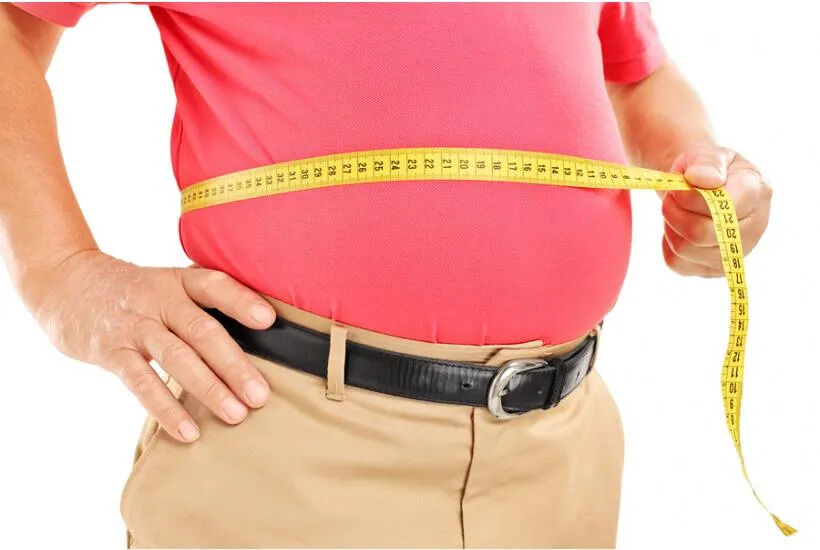Being Thin Everywhere Except Your Midsection Can Be Deadlier Than Obesity

Have you ever heard of the term “skinny-fat”? The term refers to people—some 30 million across the nation, according to researchers at the Mayo Clinic—who are are thin everywhere except around the middle.
Being skinny-fat might seem more like a nuisance than a serious health issue, but it can actually be more deadly than obesity. Are you skinny-fat? Read on to learn how you can tell and what you can do about it.
The Skinny on Being Skinny-fat
Some call it a “beer gut.” Others call it a “spare tire” or, simply, belly fat. Regardless of what you call it, if you are skinny everywhere but in your midsection, you are at increased risk for heart disease, diabetes, and even some forms of cancer.
The fat around your middle is called “visceral fat.” As you gain more belly fat, the individual fat cells expand and create toxins that can negatively affect your body. These toxins can make your body less sensitive to insulin, increasing your risk for diabetes. They can lead to lower levels of HDL (or “good”) cholesterol, and higher levels of triglycerides, which are fatty acids in the blood that can contribute to heart disease. They can also cause inflammation, which can also lead to cancers of the esophagus, pancreas, and colon.
Belly fat is commonly found in simple carbohydrates like processed and fast foods, pasta, bread, and alcohol. At first, your body does a good job of hiding it, and even when your belly does start to bulge, the fact that the added weight is limited to your midsection can make you think that you are healthier than you really are.
Are you at risk?
While it can be stressful to think about the health issues associated with belly fat, the good news is that it is pretty easy to tell if you are at risk—and, if you are, pretty easy to know what to do about it.
First, measure your waist. If you're a woman, and your waist measures 35 inches (or more), you may be at risk. If you're a man, 40 inches is the magic number. If you've had to buy bigger pants, but the rest of your body looks or feels the same, you need to address your belly fat. You should also seriously consider consulting your physician about your risk for cardiovascular disease, diabetes, and (even) cancer.
Next, if you are at risk, it's time to step up your healthy eating and exercise efforts.
When it comes to your diet, steer away from fried, fatty, salty, and sugary foods. Avoid processed foods, and drop the sodas and juices, too. Eat more natural foods, fewer starches, and ramp up your fruit and vegetable (especially green ones) intake. And opt for lean meats whenever possible.
As far as exercise is concerned, don't focus on just your belly. Getting rid of belly fat requires a more holistic approach.
If you just focus on your belly—like by doing a zillion sit-ups or crunches, for example—without changing your eating habits or doing any other kind of exercise, you're likely to just wind up with a belly that sticks out more. You need to build muscle while also burning fat. Do cardio (walking, running, swimming, etc.) for an hour a day five times a week plus strength training twice a week.
Also, start parking a little farther from your office or the mall, and try to use the stairs instead of the elevator. Get up a walk around a little while at work instead of sitting at your desk all day, and make sure you get between seven or eight hours of sleep each night. (A lack of sleep can sabotage your weight-loss efforts.)
Visceral fat can be tougher and tougher deal with as you age, but adopting a healthier lifestyle now can help you win the battle of the belly for years to come.